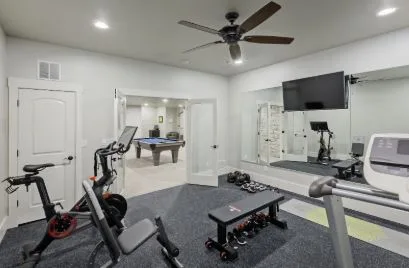Optimizing Post-ACL Reconstruction Rehab: From Milestones to Return-to-Play
When soccer star Megan Rapinoe tore her ACL just minutes into the 2023 NWSL Championship final, her career-ending injury served as a stark reminder of how devastating ACL tears can be for athletes. Yet what many don’t realize is that roughly 200,000 Americans undergo ACL reconstruction surgery each year, and with proper rehabilitation, up to 90% successfully return to their previous activity levels. The key lies in following evidence-based ACL reconstruction rehab milestones that guide recovery from surgery to sport.
Whether you’re an athlete facing this journey or a therapist guiding someone through it, understanding the roadmap ahead can make the difference between a successful return to play and lingering limitations that sideline dreams.
Understanding the ACL Recovery Timeline
ACL reconstruction rehabilitation isn’t a sprint—it’s a methodical marathon spanning 6-12 months. The process revolves around achieving specific ACL reconstruction rehab milestones that ensure your knee is ready for each progressive stage. These milestones aren’t arbitrary checkboxes; they’re scientifically-backed benchmarks that protect your healing graft while systematically rebuilding strength, mobility, and confidence.
The rehabilitation journey typically unfolds in four distinct phases: immediate post-operative care (0-2 weeks), early rehabilitation (2-6 weeks), intermediate strengthening (6-12 weeks), and advanced training leading to return-to-play (3-6+ months). Each phase builds upon the previous one, creating a foundation that supports long-term knee health and athletic performance.
Success depends on patience and adherence to your physical therapy protocol. Rushing through milestones or skipping steps often leads to setbacks, prolonged recovery, or increased risk of re-injury. Research consistently shows that athletes who follow structured, milestone-based rehabilitation programs have significantly better outcomes than those who take shortcuts.
Phase 1: Protecting the Healing Foundation (0-6 Weeks)
The initial weeks after surgery focus on protecting graft healing while preventing complications. Your newly reconstructed ACL needs time to integrate with surrounding bone tissue—a process called ligamentization that can take several months to complete.
During this critical period, your physical therapy protocol emphasizes gentle range of motion exercises, basic strengthening, and swelling management. Early milestones include achieving full knee extension, regaining 90 degrees of flexion by week 2, and progressing to 120 degrees by week 6. These targets might seem modest, but they’re crucial for preventing scar tissue formation that could limit long-term mobility.
Weight-bearing progression typically advances from partial to full weight-bearing by week 6, assuming no complications arise. This gradual loading helps stimulate healthy tissue remodeling while protecting the healing graft from excessive stress. Pain and swelling should steadily decrease during this phase, with most athletes transitioning from crutches to normal walking patterns.
The psychological aspect of recovery begins immediately. Many athletes experience anxiety about their knee’s stability or fear of re-injury. Open communication with your rehabilitation team about these concerns is essential—they’re completely normal and addressing them early sets the stage for better long-term outcomes.
Phase 2: Building Strength and Stability (6-12 Weeks)
As graft healing progresses, the focus shifts toward rebuilding the strength and neuromuscular control lost during the initial injury and surgery. This phase introduces more challenging exercises while maintaining respect for the healing timeline.
Strengthening protocols target both the injured and uninjured leg, as research shows significant strength deficits can develop in the “healthy” limb during the acute recovery phase. Quadriceps strengthening receives particular attention, as these muscles often show the most dramatic weakness after ACL injury and surgery.
Proprioception training becomes increasingly important during this phase. Proprioception—your body’s ability to sense joint position and movement—is significantly impaired after ACL injury. Specialized exercises that challenge balance and joint awareness help retrain this crucial system, reducing the risk of future injury and improving overall knee function.
Balance exercises progress from simple single-leg stands to more dynamic challenges involving unstable surfaces or perturbations. This systematic approach to proprioceptive training has been shown to improve both subjective confidence and objective measures of knee stability.
Phase 3: Advanced Training and Sports Preparation (3-6+ Months)
The advanced phase represents the bridge between basic rehabilitation and return to sport. Here, ACL reconstruction rehab milestones become more functional and sport-specific, reflecting the demands athletes will face upon return to competition.
Plyometric exercises—controlled jumping and landing activities—gradually increase in complexity and intensity. These exercises are crucial for developing the explosive power and reactive strength needed for athletic performance while teaching proper movement patterns that protect the knee during high-risk activities.
Sports-specific training becomes the primary focus as athletes demonstrate mastery of fundamental movement patterns. A basketball player might progress from basic cutting drills to complex defensive slides with ball handling, while a soccer player advances from straight-line running to multi-directional sprints with ball control.
Psychological readiness receives equal attention alongside physical preparation. Fear of re-injury is common and can significantly impact performance even when physical capabilities have been restored. Sports psychology interventions that address these concerns through visualization, confidence-building exercises, and gradual exposure to sport-specific stressors can dramatically improve return-to-play success rates.
Return-to-Play: More Than Just Physical Readiness
The decision to return to competitive sports should never be based solely on time elapsed since surgery. Instead, it requires comprehensive assessment of multiple factors including strength testing, functional movement screening, psychological readiness evaluation, and sport-specific performance metrics.
Strength testing typically requires the injured leg to achieve at least 90% of the strength of the uninjured leg, though many experts advocate for 95% or higher before clearing athletes for unrestricted activity. Functional tests like hop assessments evaluate not just strength but also neuromuscular control and confidence during dynamic activities.
Movement quality assessment helps identify compensatory patterns that might increase injury risk. Even when strength numbers look good, athletes sometimes develop altered movement strategies that place excessive stress on other joints or the ACL graft itself.
The psychological component of return-to-play readiness often receives insufficient attention despite its critical importance. Athletes must feel confident in their knee’s ability to handle sport demands and be mentally prepared to engage fully in competitive activities without hesitation or fear-based movement modifications.
Key Takeaways for Optimal Recovery
Successfully navigating ACL reconstruction rehabilitation requires patience, consistency, and trust in the process. Focus on achieving each milestone completely before progressing to the next phase, as solid foundations prevent future setbacks.
Communication with your rehabilitation team is essential throughout the journey. Be honest about pain levels, concerns, and goals—this information helps customize your program for optimal outcomes. Remember that recovery timelines vary significantly between individuals, and comparing your progress to others can be counterproductive.
Finally, view rehabilitation as an opportunity to return stronger and more resilient than before your injury. Many athletes report feeling more confident in their movement and athletic abilities after completing comprehensive ACL rehabilitation programs. With proper guidance and commitment to the process, your return to sport can mark the beginning of your best athletic performances yet.






